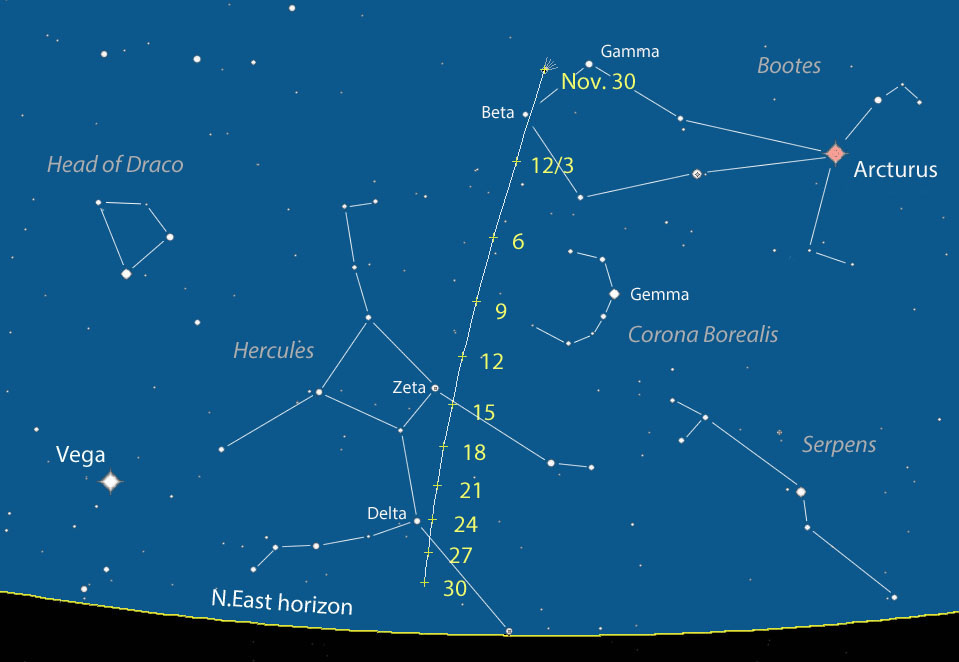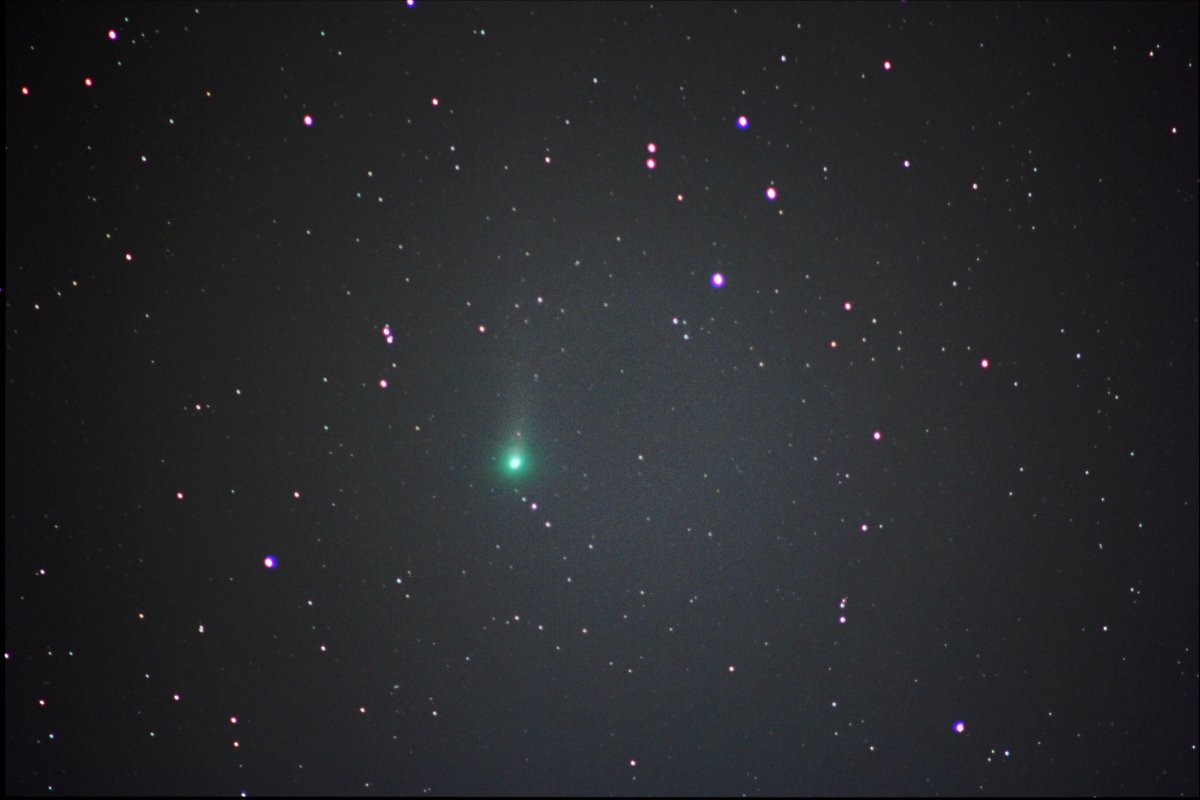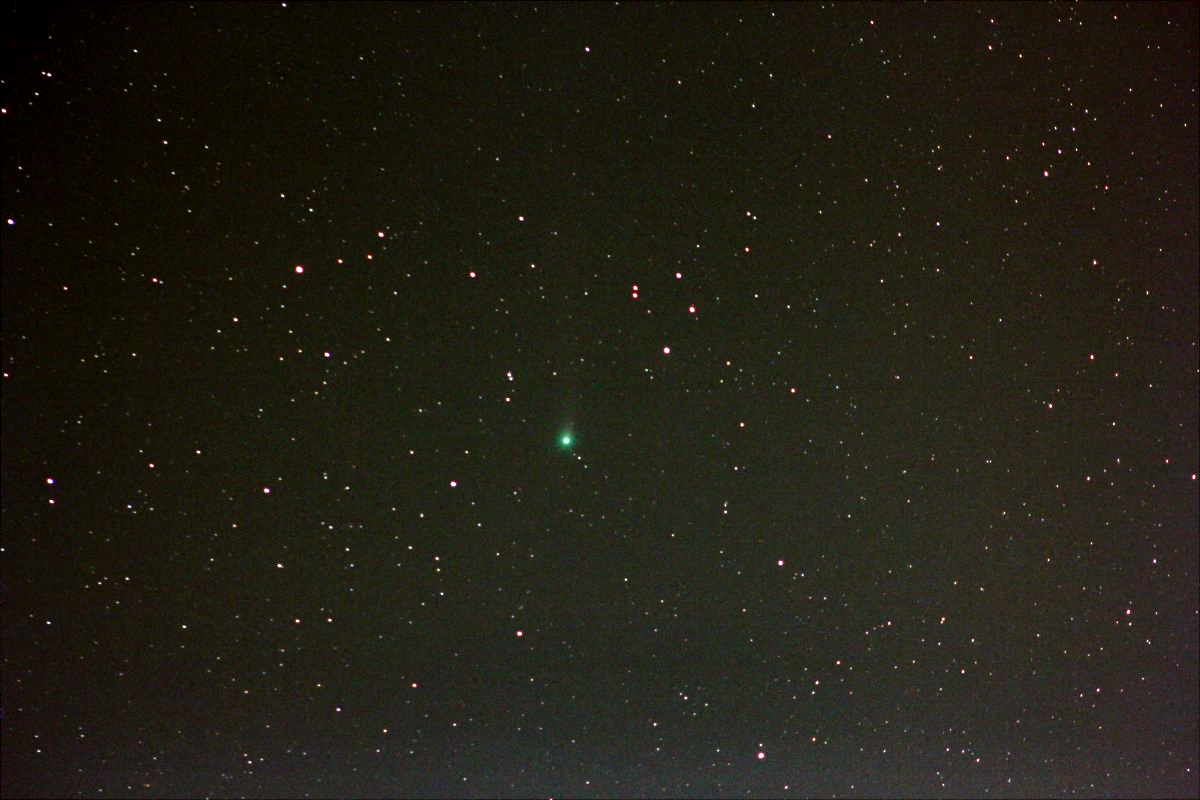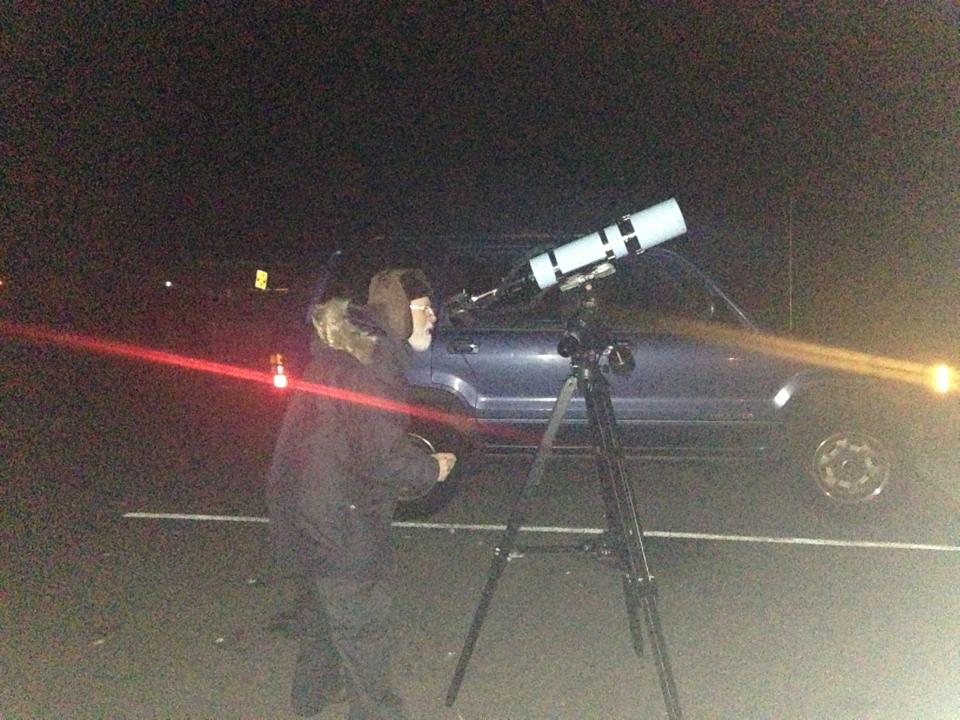C/2013 R1 (Lovejoy) is a long-period comet discovered on 7 September 2013 by Terry Lovejoy using a 0.2-meter (8 in) Schmidt–Cassegrain telescope.
It is the fourth comet discovered by Terry Lovejoy. C/2013 R1 crossed the celestial equator on 14 October 2013, becoming a better Northern Hemisphere object.
It is the fourth comet discovered by Terry Lovejoy. C/2013 R1 crossed the celestial equator on 14 October 2013, becoming a better Northern Hemisphere object.

By 1 November 2013, the comet was visible to the naked eye near the Beehive Cluster (M44), about halfway between Jupiter and Regulus.
It became more impressive than comet ISON. In binoculars, the comet has the appearance of a green, unresolved globular cluster.
It became more impressive than comet ISON. In binoculars, the comet has the appearance of a green, unresolved globular cluster.

Canon 40D w/300mm lens @ f/5.6. 16 x 30 second exposures, shot November 16th, 2013 @ 23:22 EST
C/2013 R1 made its closest approach to Earth on 19 November 2013 at a distance of 0.3967 AU 36,880,000 mi, and reached an apparent magnitude of about 4.5.
On 27 November 2013 the comet was in the constellation of Canes Venatici, near the bottom of the handle of the Big Dipper.
From 28 November until 4 December 2013, the comet was in the constellation Bo÷tes.
On 1 December 2013 it passed the star Beta Bo÷tis. From 4 December until 12 December 2013, the comet was in the constellation Corona Borealis
On 27 November 2013 the comet was in the constellation of Canes Venatici, near the bottom of the handle of the Big Dipper.
From 28 November until 4 December 2013, the comet was in the constellation Bo÷tes.
On 1 December 2013 it passed the star Beta Bo÷tis. From 4 December until 12 December 2013, the comet was in the constellation Corona Borealis

Canon 40D w/80mm lens @ f/4.5. 16 x 30 second exposures, shot November 16th, 2013 @ 23:22 EST. Notice that I was getting some amp glow in my image.
I purchased an external battery pack to solve that problem.
From 12 December until 14 January 2014, the comet was in the constellation Hercules. On 14 December 2013, it passed the star Zeta Herculis.
The comet came to perihelion (closest approach to the Sun) on 22 December 2013 at a distance of 0.81 AU, 75,000,000 miles from the Sun.
At perihelion, the comet had an elongation of 51 degrees from the Sun. By September 2014, the comet had fainted to magnitude 18.
Terry Lovejoy (born 20 November 1966) is an information technologist from Thornlands, Queensland, Australia, most widely known as an amateur astronomer.
He has discovered six comets, including C/2011 W3 (Lovejoy), the first Kreutz Sungrazing comet discovered by ground-based observation in over 40 years.
He is also known for popularizing procedures for modifying consumer-grade digital cameras so that they can be used for digital camera astrophotography
Lovejoy is known among amateur astronomers for identifying modifications to digital cameras needed for astrophotography.
Such cameras come configured with built-in filters that cut off infrared light.
They also cut off some of the red light that many deep space objects emit.
After he published procedures to modify those filters, many amateur astronomers were able to improve their deep space photography.
n 15 March 2007, Lovejoy used a standard camera to discover the comet C/2007 E2 (Lovejoy).
Two months later, he discovered another comet, designated C/2007 K5 (Lovejoy) using the modified camera.
On 27 November 2011, with his discovery of C/2011 W3 (Lovejoy), he became the first astronomer in over 40 years to discover a Kreutz Sungrazing comet from a ground-based observation.
The discovery was made using a Celestron C8 Schmidt–Cassegrain telescope working at f/2.1 with a QHY9 CCD camera.
On 7 September 2013, Lovejoy discovered comet C/2013 R1 (Lovejoy) which became visible to the naked eye in November 2013
On 17 August 2014, Lovejoy discovered comet C/2014 Q2 (Lovejoy) in the constellation Puppis and his most recent discovery, C/2017 E4 (Lovejoy), s
Mike Harkey and I have braved the elements a couple of nights now at the Spitzer Marina in Lorain to view Comet C/2012 R1 Lovejoy.
The comet came to perihelion (closest approach to the Sun) on 22 December 2013 at a distance of 0.81 AU, 75,000,000 miles from the Sun.
At perihelion, the comet had an elongation of 51 degrees from the Sun. By September 2014, the comet had fainted to magnitude 18.
Terry Lovejoy (born 20 November 1966) is an information technologist from Thornlands, Queensland, Australia, most widely known as an amateur astronomer.
He has discovered six comets, including C/2011 W3 (Lovejoy), the first Kreutz Sungrazing comet discovered by ground-based observation in over 40 years.
He is also known for popularizing procedures for modifying consumer-grade digital cameras so that they can be used for digital camera astrophotography
Lovejoy is known among amateur astronomers for identifying modifications to digital cameras needed for astrophotography.
Such cameras come configured with built-in filters that cut off infrared light.
They also cut off some of the red light that many deep space objects emit.
After he published procedures to modify those filters, many amateur astronomers were able to improve their deep space photography.
n 15 March 2007, Lovejoy used a standard camera to discover the comet C/2007 E2 (Lovejoy).
Two months later, he discovered another comet, designated C/2007 K5 (Lovejoy) using the modified camera.
On 27 November 2011, with his discovery of C/2011 W3 (Lovejoy), he became the first astronomer in over 40 years to discover a Kreutz Sungrazing comet from a ground-based observation.
The discovery was made using a Celestron C8 Schmidt–Cassegrain telescope working at f/2.1 with a QHY9 CCD camera.
On 7 September 2013, Lovejoy discovered comet C/2013 R1 (Lovejoy) which became visible to the naked eye in November 2013
On 17 August 2014, Lovejoy discovered comet C/2014 Q2 (Lovejoy) in the constellation Puppis and his most recent discovery, C/2017 E4 (Lovejoy), s
Mike Harkey and I have braved the elements a couple of nights now at the Spitzer Marina in Lorain to view Comet C/2012 R1 Lovejoy.

It's naked eye visible right now just before dawn in the North Eastern sky with a tail over 10 degrees long.
This
is a classic comet with a nice bright green nucleus and long tail and
I'd encourage everybody to take a look soon. It's hurtling sunward for
perihelion.
